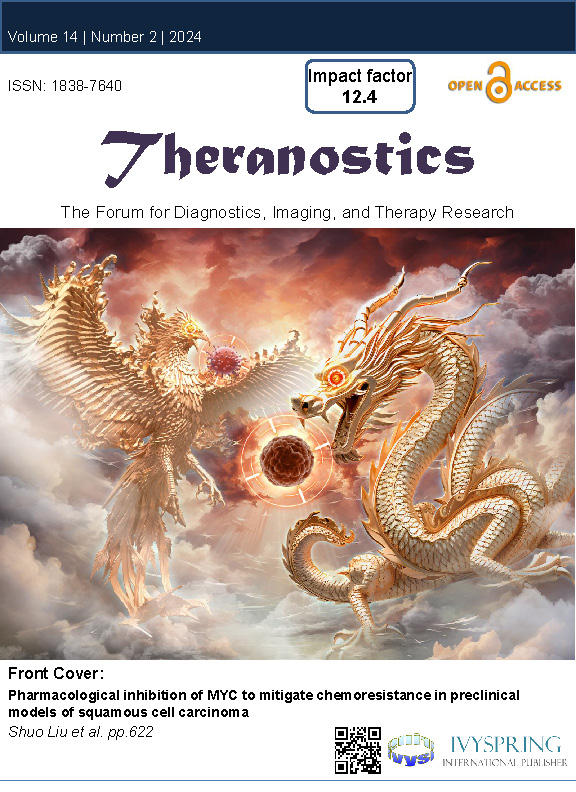SEMA6B induces macrophage-mediated inflammation and hepatocyte apoptosis in hepatitis B virus-related acute-on-chronic liver failure
IF 12.4
1区 医学
Q1 MEDICINE, RESEARCH & EXPERIMENTAL
引用次数: 0
Abstract
Rationale: Patients with hepatitis B virus-related acute-on-chronic liver failure (HBV-ACLF) have a high short-term mortality rate. Semaphorin-6B (SEMA6B) plays a crucial role in the pathogenesis of HBV-ACLF, but its molecular basis remains unclear. This study aimed to elucidate the mechanisms of SEMA6B in HBV-ACLF progression./nMethods: A total of 321 subjects with HBV-ACLF, liver cirrhosis (LC), chronic hepatitis B (CHB), and normal controls (NC) from a prospective multicenter cohort were studied. 84 subjects (HBV-ACLF, n = 50; LC, n = 10; CHB, n = 10; NC, n = 14) among them underwent mRNA sequencing using peripheral blood mononuclear cells (PBMCs) to clarify the mechanisms of SEMA6B in HBV-ACLF. These mechanisms were validated through in vitro studies with hepatocytes and macrophages, as well as in vivo using SEMA6B knockout mice and mice treated with synthetic SEMA6B siRNA./nResults: Transcriptome analysis of PBMCs showed that SEMA6B was among the most differentially expressed genes when comparing patients with HBV-ACLF to those with LC, CHB, or NC. ROC analysis demonstrated the reliable diagnostic value of SEMA6B for HBV-ACLF in both the sequencing cohort and an external validation cohort (AUROC = 0.9788 and 0.9026, respectively). SEMA6B levels were significantly higher in the HBV-ACLF patients, especially in non-survivors, with high expression mainly observed in macrophages and hepatocytes in liver tissue. Genes significantly associated with highly expressed SEMA6B were enriched in inflammation and apoptosis pathways in HBV-ACLF non-survivors. Overexpression of SEMA6B in macrophages activated systemic inflammatory responses, while its overexpression in hepatocytes inhibited proliferation through G0/G1 cell cycle arrest and induced apoptosis. Knocking out SEMA6B rescued mice with liver failure by improving liver functions, reducing inflammatory responses, and decreasing hepatocyte apoptosis. Transcriptome analysis of liver tissue showed that SEMA6B knockout significantly ameliorated the liver failure signature, significantly downregulating inflammation-related pathways. Importantly, therapeutic delivery of synthetic SEMA6B siRNA also improved liver function, and reduced both inflammation and hepatocyte apoptosis in mice with liver failure./nConclusion: SEMA6B, a potential diagnostic biomarker for HBV-ACLF, exacerbates liver failure through macrophage-mediated systemic inflammation and hepatocyte apoptosis. These findings highlight SEMA6B as a promising early treatment target for HBV-ACLF patients.SEMA6B 在乙型肝炎病毒相关急慢性肝衰竭中诱导巨噬细胞介导的炎症和肝细胞凋亡
理由乙型肝炎病毒相关急性-慢性肝衰竭(HBV-ACLF)患者的短期死亡率很高。半合成蛋白-6B(SEMA6B)在 HBV-ACLF 的发病机制中起着至关重要的作用,但其分子基础仍不清楚。本研究旨在阐明SEMA6B在HBV-ACLF进展中的作用机制:一项前瞻性多中心队列共研究了 321 名 HBV-ACLF、肝硬化(LC)、慢性乙型肝炎(CHB)患者和正常对照组(NC)。其中 84 名受试者(HBV-ACLF,n = 50;LC,n = 10;CHB,n = 10;NC,n = 14)使用外周血单核细胞(PBMCs)进行了 mRNA 测序,以明确 SEMA6B 在 HBV-ACLF 中的作用机制。这些机制通过肝细胞和巨噬细胞的体外研究以及 SEMA6B 基因敲除小鼠和合成 SEMA6B siRNA 治疗小鼠的体内研究得到了验证:PBMCs的转录组分析表明,在将HBV-ACLF患者与LC、CHB或NC患者进行比较时,SEMA6B是差异表达最大的基因之一。ROC分析表明,在测序队列和外部验证队列中,SEMA6B对HBV-ACLF具有可靠的诊断价值(AUROC分别为0.9788和0.9026)。SEMA6B水平在HBV-ACLF患者中明显较高,尤其是在非存活者中,主要在肝组织中的巨噬细胞和肝细胞中观察到高表达。在 HBV-ACLF 非存活患者中,与 SEMA6B 高表达明显相关的基因富集在炎症和细胞凋亡通路中。在巨噬细胞中过表达 SEMA6B 会激活全身炎症反应,而在肝细胞中过表达 SEMA6B 则会通过 G0/G1 细胞周期停滞抑制增殖并诱导细胞凋亡。敲除 SEMA6B 能改善肝功能、减轻炎症反应和减少肝细胞凋亡,从而拯救肝衰竭小鼠。肝组织转录组分析表明,SEMA6B基因敲除能显著改善肝衰竭特征,显著下调炎症相关通路。重要的是,合成 SEMA6B siRNA 的治疗递送也改善了肝功能,并减少了肝衰竭小鼠的炎症和肝细胞凋亡:SEMA6B是HBV-ACLF的潜在诊断生物标志物,它通过巨噬细胞介导的全身炎症和肝细胞凋亡加剧肝衰竭。这些研究结果突出表明,SEMA6B 是 HBV-ACLF 患者有希望的早期治疗靶点。
本文章由计算机程序翻译,如有差异,请以英文原文为准。
求助全文
约1分钟内获得全文
求助全文
来源期刊

Theranostics
MEDICINE, RESEARCH & EXPERIMENTAL-
CiteScore
25.40
自引率
1.60%
发文量
433
审稿时长
1 months
期刊介绍:
Theranostics serves as a pivotal platform for the exchange of clinical and scientific insights within the diagnostic and therapeutic molecular and nanomedicine community, along with allied professions engaged in integrating molecular imaging and therapy. As a multidisciplinary journal, Theranostics showcases innovative research articles spanning fields such as in vitro diagnostics and prognostics, in vivo molecular imaging, molecular therapeutics, image-guided therapy, biosensor technology, nanobiosensors, bioelectronics, system biology, translational medicine, point-of-care applications, and personalized medicine. Encouraging a broad spectrum of biomedical research with potential theranostic applications, the journal rigorously peer-reviews primary research, alongside publishing reviews, news, and commentary that aim to bridge the gap between the laboratory, clinic, and biotechnology industries.
 求助内容:
求助内容: 应助结果提醒方式:
应助结果提醒方式:


